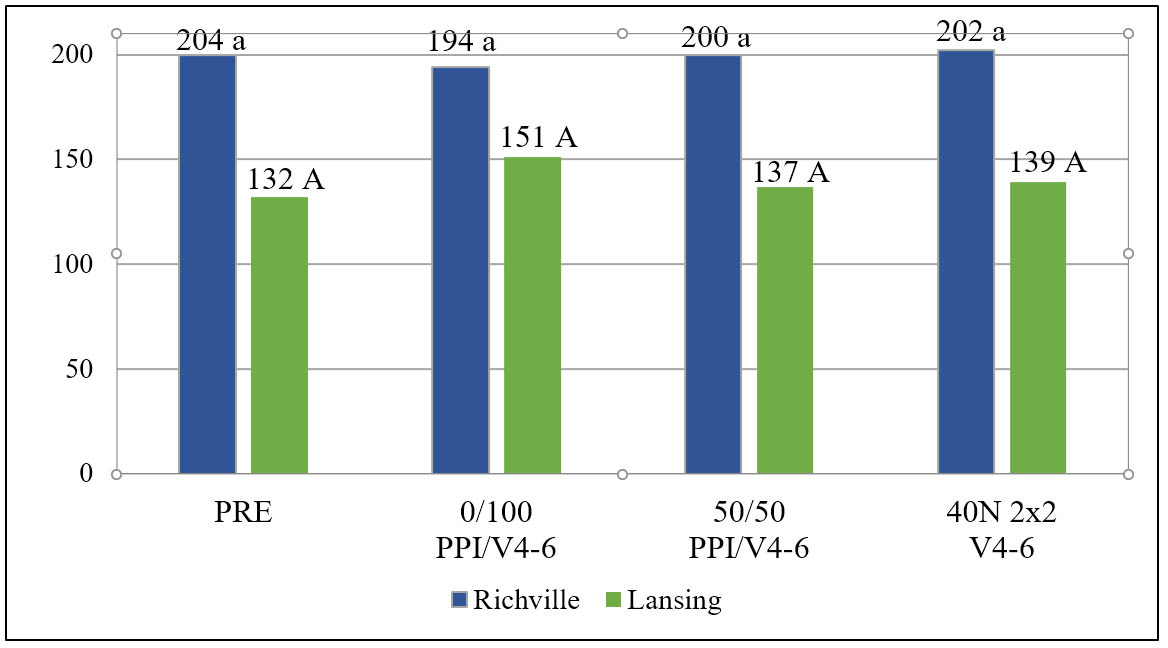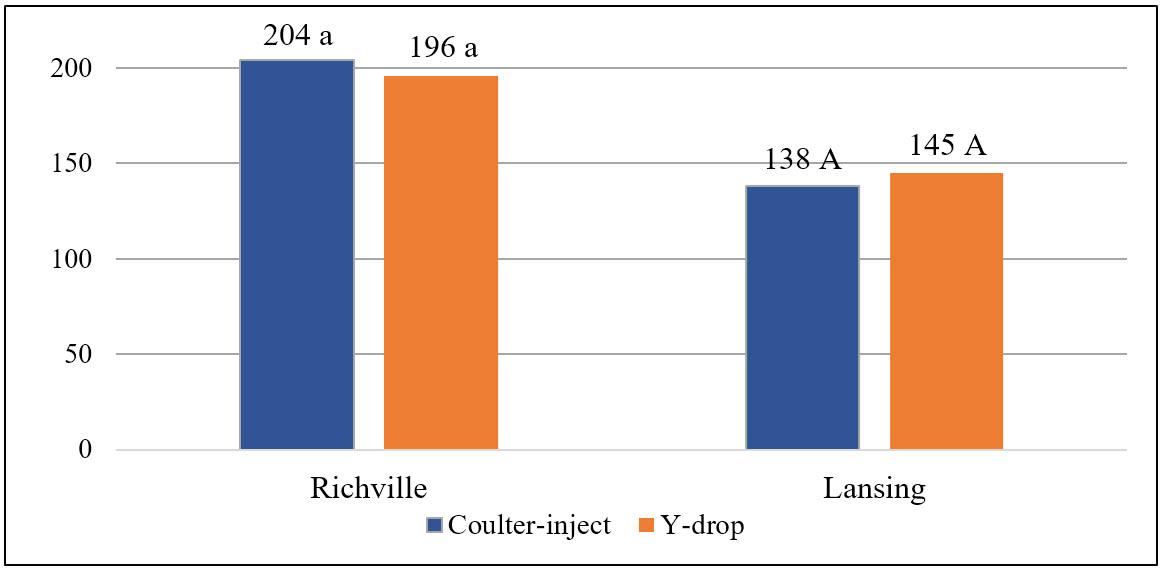Targeting corn nitrogen strategies for improved resilience
Volatile environmental conditions continue to challenge agricultural production.

Environmental, agronomic and economic concerns regarding nitrogen (N) use and recovery coupled with increasingly volatile weather patterns continue to emphasize the importance of improving N management strategies. Closer synchronization between N timing and placement with peak corn N demand may reduce N loss potential. In-season N applications allow some degree of flexibility to improve yield and N recovery by adjusting to current weather patterns and soil moisture conditions. New N application methods have been developed to increase application efficiency by applying N more quickly and placing N closer to the growing plant. However, few data exist evaluating multiple strategies subject to similar conditions (i.e., N rate, placement, and timing) under field environments in Michigan.
In 2018, field studies were initiated in Richville and Lansing, Michigan supported by The Corn Marketing Program of Michigan to evaluate multiple N timing and sidedress placement strategies. Nitrogen rates were consistent across strategies at 170 and 145 lbs N per acre in Richville and Lansing, respectively. Nitrogen strategies consisted of:
- PRE: 100% of N after planting but prior to corn emergence.
- 0/100: 0% of N pre-plant incorporated, 100% of N at V4-6 sidedress.
- 50/50: 50% of N pre-plant incorporated, 50% of N at V4-6 sidedress.
- 2x2: 40 lbs N per acre in a 2x2 with the remainder of N at V4-6 sidedress.
Sidedress placement methods within each timing strategy consisted of: coulter-inject located 15 inches from the corn row and Y-drop application located immediately adjacent to the corn row (Fig. 2). Mid-season sidedress N applications were made on May 31 and June7, 2018, in Richville and Lansing, respectively.

Combinations of N timing and sidedress placement strategies did not affect yield at either location. Corn grain yield ranged from 194 to 202 bu A-1 in Richville and 132 to 151 bu A-1 in Lansing but was not significantly affected by N timing strategies (Fig. 3). Dry soil conditions at both locations during May through July likely limited N mobility within the root zone overshadowing any effects from N timing strategies.
Sidedress placement strategy did not affect corn grain yield at either location. Coulter-inject and Y-drop surface application resulted in statistically similar grain yields of 204 and 196 bu A-1 and 138 and 145 bu A-1 in Richville and Lansing, respectively (Fig. 4). Response to sidedress N placement may have been limited by lack of precipitation (≤ 0.30 inches) within the 7 days following application.

Environmental conditions encountered after application greatly influence N efficiency as water is one of four components in addition to oxygen, roots and plant-available nutrients required for root uptake. Data from 2018 indicated lack of response to delaying N applications closer to peak uptake periods (i.e., V4-6) or with sidedress N placement closer to the base of the plant during dry soil conditions. While delaying N applications until V4-6 may reduce N loss potential, limited mid-season soil moisture during this sidedress application timing may restrict N uptake and limit corn yield potential as was observed in 2018. Daily wetting and drying of the soil surface due to evaporation can limit the downward movement of surface-applied N but other factors including applicator speed, soil moisture status (i.e., wet or dry) and sidedress timing warrant consideration. Due to lack of significant grain yield differences, economic analyses were not performed. However, when deliberating between corn N management strategies, growers should be aware of weather forecasts and recent in-season weather variability which will influence the potential for N loss conditions through volatilization, leaching or denitrification.

For additional information on this research trial and others, please visit the MSU Soil Fertility Research website and view our online video updates.
Kurt Steinke’s work is funded in part by MSU’s AgBioResearch.



 Print
Print Email
Email